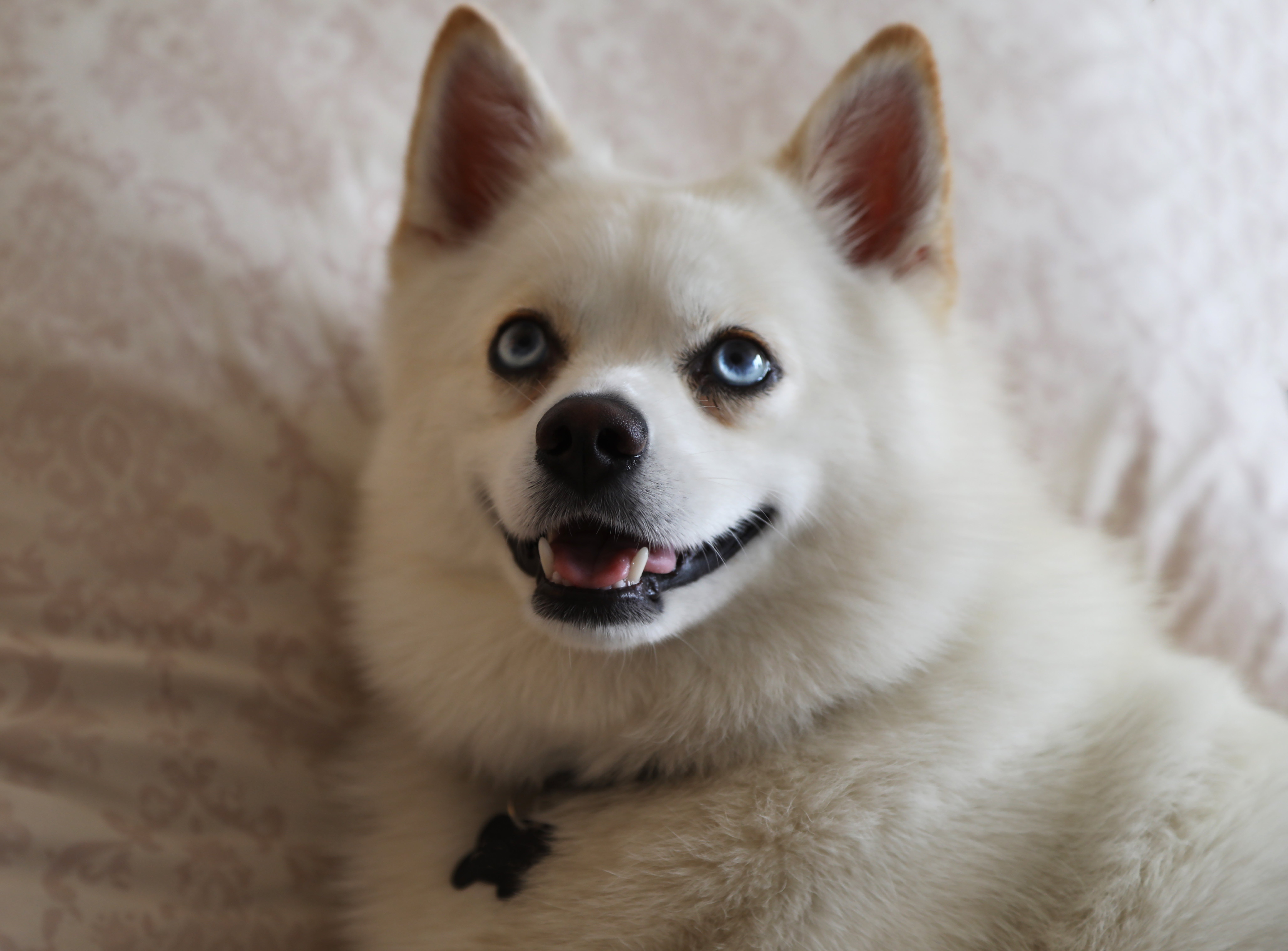Pomsky
A cross between the Pomeranian and the Siberian Husky, the Pomsky is a relatively new breed, first created via artificial insemination in 2012 to make the charming and hilarious Siberian Husky smaller. Pomskys can inherit traits of both breeds, but overall they are happy-go-lucky, easygoing dogs, albeit ones with a stubborn streak. They tend to bond with one person but can thrive in family life if trained properly.
Breed characteristics carousel
Learn More
The Need-to-Know
- Dogs suitable for experienced owners
- Extra training required
- Generally healthy breed
- Enjoys vigorous walks
- Medium dog
- Some drool
- Requires grooming
- Chatty and vocal dog
- Barks and alerts to visitors/anything unusual
- Could have issues with unknown dogs but gets along with known dogs
- May need additional training to live with other pets
- Great family dog
- Needs a large yard and can live in suburban and rural areas
- Cannot be left alone

Personality
Funny, fun-loving, and intelligent, the Pomsky exudes personality and won’t be afraid to tell you what they think via their famous Siberian Husky “howling.” They can be stubborn and aloof around strangers, so first-time dog parents might have a hard time with their obstinance. Typically, they bond strongly with one person but they can get along well with others in a household if trained properly. They maintain strong running instincts, so it’ll be important for Pomsky owners to establish a good working training relationship with their dogs to prevent them from roaming.
The Pomeranian is a German spitz breed that gained popularity when Queen Charlotte brought her court dogs from her homeland to England. They became a beloved Victorian dog breed, shrinking over time as they were bred.
The Siberian Husky is a Russian sled dog that might have a history as far back as 3,000 years. They were key to the survival of the people they lived with and were bred to carry loads over long distances at super high speeds. They were always companion dogs, bred to live among families and be friendly towards children. The Husky Pomeranian’s origin story is a short one. The first official record of one was in 2012, due to artificial insemination.
Ideal Pomsky owners will have an affinity for or experience with one or both breeds and be willing to accept a wide variety of sizes and temperaments. Lots of time devoted to training, walking, and grooming is required to have your Pomsky be a fun and engaging companion dog. They do best with owners who are home most of the time and families with no children or older children.
One long walk per day plus some additional play sessions can burn off a Pomsky’s energy for the day. They are bright, so consider adding puzzles, games, and toys to challenge their big brains.
They can be unpredictable in size, which makes their space requirements unpredictable. Smaller dogs can live in less square footage but need regular outings for potty time and exercise.
Get the lint roller ready—Pomskies shed. Regular brushing can help get the shedding under control, but it’s recommended to get your dog professionally trimmed once every three months so that knots don’t form.
Pomeranian and Siberian Husky mixes are highly intelligent but potentially difficult to train for companionship thanks to their specialist lineage as running dogs. Training will take the patience of a saint and will need a reward-based approach to succeed. They should be trained to walk on a leash with good recall.
Pomskies can be good family dogs if trained properly, but they might be too independent and aloof for some households.
The cost of a Pomsky from a breeder is significantly more than the cost of adopting one from a local shelter or rescue. The adoption fee usually covers additional items such as spaying or neutering, vaccines, and microchipping.

Learn more about feeding and caring for your Pomsky on Purina.
Did You Know
- They may be very chatty, “howling” the famous Siberian Husky howl.
- During World War II they were used as search and rescue dogs by the United States military in the Arctic.

